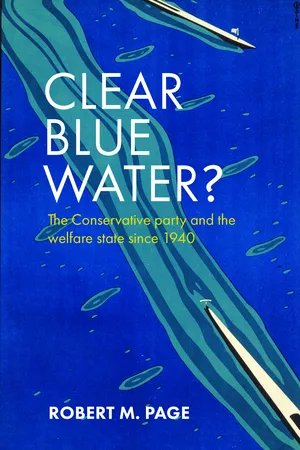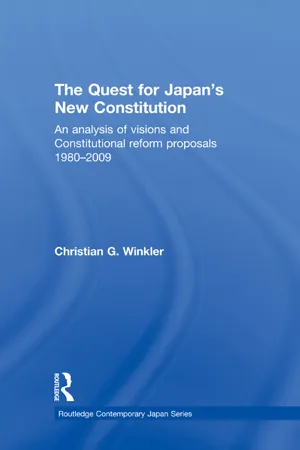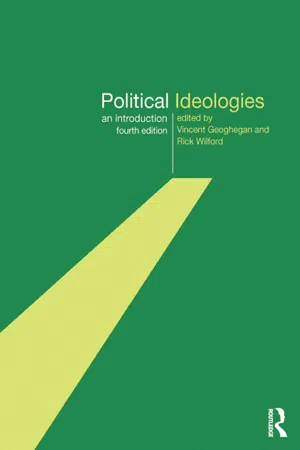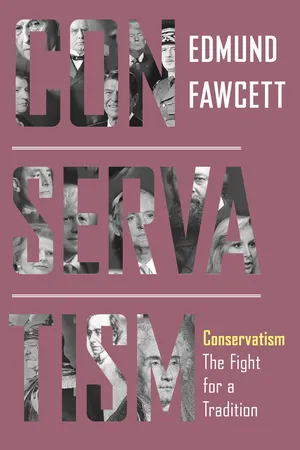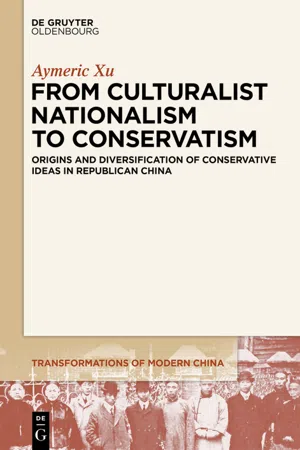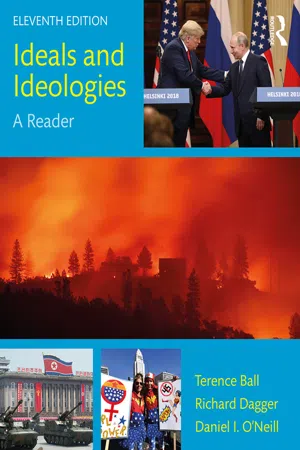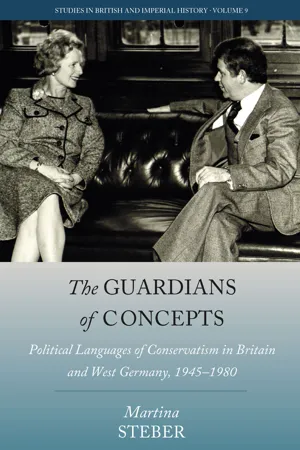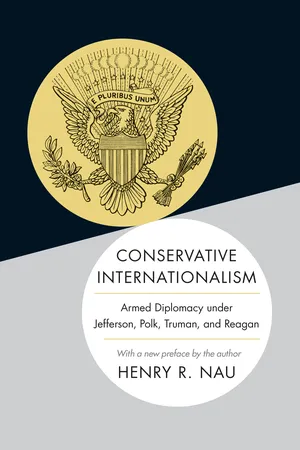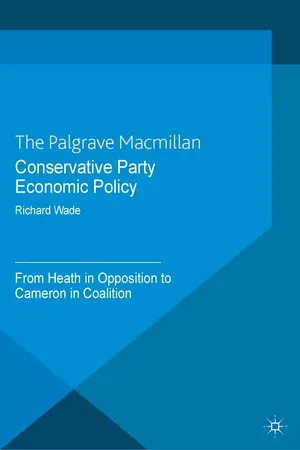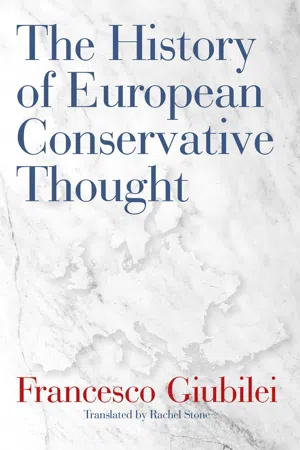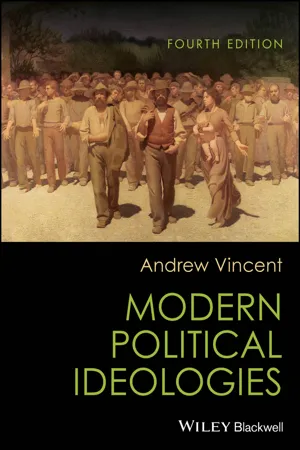Politics & International Relations
Conservatism
Conservatism is a political ideology that emphasizes the preservation of traditional institutions and values, advocating for gradual change rather than radical reform. It prioritizes stability, order, and continuity, and is often associated with a preference for limited government intervention in the economy and social affairs. Conservatism typically values individual responsibility, free markets, and a strong national defense.
Written by Perlego with AI-assistance
Related key terms
Related key terms
1 of 4
Related key terms
1 of 3
12 Key excerpts on "Conservatism"
- eBook - ePub
Clear Blue Water?
The Conservative Party and the Welfare State since 1940
- Page, Robert M., Robert M. Page(Authors)
- 2016(Publication Date)
- Policy Press(Publisher)
While this represents a useful starting position, it begs the question of what is to be protected and for what purpose? As Heywood (2007) notes, ‘if Conservatism were to consist of no more than a knee-jerk defence of the status quo, it would be merely a political attitude rather than an ideology. In fact, many people or groups can be considered “conservative” in the sense that they resist change, but certainly cannot be said to subscribe to a conservative political creed’ (p 68). It is important to note that many self-professed conservatives, including those who are members or supporters of the Conservative Party, would regard themselves as having non-ideological inclinations and dispositions that develop slowly and are ‘honed by maturity and experience of life’ (Ball, 2013, p 2). Their attitudes towards economic and social issues are formed on the basis of common sense and pragmatism rather than a premeditated ideological stance. 3 From this perspective, then, Conservatism is portrayed as pragmatic, moderate, and protective of an existing social order that has stood the test of time. 4 This emphasis on the non-ideological nature of Conservatism owes much to a desire on the part of those who subscribe to this creed to distinguish themselves from what they regard as the ‘ideological’ doctrines of liberalism and socialism based on ‘grand schemes of social engineering’ (Eccleshall et al, 1984, p 80). 5 For conservatives, it is always preferable to keep to ‘the broad road of pragmatism’ than leave it ‘for the dense thickets of principle’ (Charmley, 2008, p 2). While Conservatism may be difficult to define precisely, this should not automatically preclude it from being regarded as an ideology. 6 As Heywood (2007) argues, ‘Conservatism is neither simple pragmatism nor mere opportunism. It is founded on a particular set of political beliefs about human beings, the societies they live in, and the importance of a distinctive set of political values - eBook - ePub
The Quest for Japan's New Constitution
An Analysis of Visions and Constitutional Reform Proposals 1980-2009
- Christian G. Winkler(Author)
- 2012(Publication Date)
- Routledge(Publisher)
1 Conservatism Theory and reality in postwar Japan 1.1 Conservatism: an Attempt at a Definition Naturally the first question that emerges when pondering the topic at hand is what exactly is Conservatism? Unfortunately there is no definitive answer to this question, as scholars have failed to agree upon any one definition. Many conservatives, regardless of their origin, tend to emphasize what it is not: namely an ideology (Et ō 1996: 19; Honderich 1990: 17–18). Dunn and Woodard argue that ‘Conservatism is about cultural traditions and values which defy simple definition’ (Dunn, Woodard 1991: 24). R.J. White, meanwhile, has offered the following assessment: ‘To put up [Conservatism] in a bottle with a label is like trying to [liquefy] the atmosphere […]. The difficulty arises from the nature of the thing. For [Conservatism] is less a political doctrine, than a habit of mind, a mode of feeling, a way of living’ (White 1950: 1). Agreeing with the last part of White’s statement, the late Et ō Jun calls Conservatism a feeling, as opposed to an ideology like socialism or capitalism (Et ō 1996: 17–18). The word ‘Conservatism’ is derived from the Latin verb conservare, meaning ‘to conserve’ or ‘to keep’. Looking at this original meaning of the word, one would be tempted to assume that a conservative was opposed to change, as his goal was to preserve the current status (Rodee et al. 1983: 103). This definition seems to be supported by the following statement made by former US President Abraham Lincoln: ‘What is Conservatism? Is it not adherence to the old and tried, against the new and untried?’ (Dunn, Woodard 1991: 21). If that were the case, then why are conservatives in favor of reform, which by its nature entails the new and untried (Honderich 1990: 5; Machimura 2005: 23)? What at first seems a paradox can be explained as follows. As Karl Mannheim has pointed out, there is a difference between what has been called natural Conservatism or traditionalism, i.e - eBook - ePub
Political Ideologies
An Introduction
- Robert Eccleshall, Vincent Geoghegan, Richard Jay, Michael Keeny, Ian MacKenzie, Richard Wilford, Vincent Geoghegan, Rick Wilford, Vincent Geoghegan, Rick Wilford(Authors)
- 2014(Publication Date)
- Routledge(Publisher)
England: An Elegy. For conservatives there is, in this sense, clarity in the inherent pragmatism of their approach to politics, which arguably provides an advantage in adapting to changing circumstances and in remaining a relevant ideological approach across a range of socio-cultural settings. Conservatism becomes particularly suitable for accommodating cultural and political diversity in ways that liberalism and, especially, socialism cannot. This is notably the case if we extend our view beyond Western societies and examine Conservatism as it applies to the rapid changes that have transformed the formerly colonised world.Postcolonial societies have in many ways remained resistant to modernisation. Despite continual attempts at transformation, they are still in many important respects characterised by traditional attributes such as deference to authority and hierarchy, the imperatives of religious duties and familial obligations and a lingering respect for traditional knowledge and ways of social and official conduct. They retain conservative principles more so than they have ever come to approximate ideals of liberal individualism, socialist collectivism or other variations on the ideological and political themes of progressivism. Thus, Conservatism offers a framework for understanding and engaging with the formerly colonised world that is very different from the liberal and Marxist foundations on which Western thinking about colonialism initially depended, as in the ambivalent views on imperialism found in the works of Mill and Marx and in the unequivocal critiques by Hobson and Lenin. Compared to liberalism, with its focus on the (abstracted) rational individual and universal values, and socialism, with its reliance on an inevitable march of history towards a communist utopia in the context of a rationalist collectivism, Conservatism can accommodate a wide range of polities and societal characteristics, where, for Kekes (1997b), most of the values constituting modern liberalism are actually incompatible with a genuine commitment to pluralism. - eBook - ePub
Conservatism
The Fight for a Tradition
- Edmund Fawcett(Author)
- 2020(Publication Date)
- Princeton University Press(Publisher)
PART IIWhat Conservatism Is
Passage contains an image
2
Character, Outlook, and Labelling of Conservatism
i. Conservatism as a Political Practice
Before the story goes on, some ground needs to be cleared. What is Conservatism? What is this a story of? There are no knockdown facts here. The questions find many answers as well as self-defeating claims that they are too difficult to have any answer. The terms in play are tricky, but “what is Conservatism?” is not about labels or meanings. The question bears on Conservatism’s character and its kind, which have to be understood historically.If you ask what kind of thing Conservatism is, you will hear that it is a party-political family, counsel of government, philosophy of society, mouthpiece of the haves, voice of all classes, unexalted picture of humankind, or universal human preference for the steady and familiar against the changeable and strange. Each answer catches some aspect of Conservatism. All are partial. Conservatism as understood here is a tradition or practice of politics. As with any practice, that involves three things. Conservatism has a history, it has participants in the practice—politicians, thinkers, backers, voters—and it has an outlook to guide them. Neither who conservatives are nor what they think can be put into a phrase or formula. Its practice is complex, but that is poor reason to stop before the story starts.Conservatives were not heard of before the early nineteenth century. Like liberals, their first opponents, conservatives faced new social conditions previously unimagined. Although their social and intellectual roots were old and deep, the scale and pace of change was disorienting. After creeping along for centuries, populations and economies had suddenly exploded in growth. Technical innovation was altering settled forms of life. Movement from country to town freed people from old authorities and customary ties. People who read and argued about politics were no longer counted in the thousands but hundreds of thousands, soon millions. Money was spent to make things that created yet more money. Capitalist modernity, in short, was turning economic methods, social patterns, and people’s outlooks upside down. It enriched and impoverished, empowered and disempowered, shuffled social ranks, created high expectations, and reframed ethical norms. In this exciting, destabilizing new condition of society, politics had to rethink itself. Liberalism and Conservatism were born. - eBook - ePub
- John Schwarzmantel(Author)
- 2008(Publication Date)
- SAGE Publications Ltd(Publisher)
Ideologies of both Right and Left were historically mirror images of each other: they developed as rival critics of the society of modernity, each with their own proposed alternative to the existing society. Each broad family of ideas of Right and Left is in a situation of crisis in the conditions of contemporary politics, since both sets of ideas have had to confront new social realities which pose severe challenges to the critique and the remedies proposed by each side in the traditional ideological conflict. The analysis then starts by looking at conservative ideologies in the widest context, initially that of Europe and North America where these ideologies originated, then more globally.The question to be probed here is of what Conservatism stands for in the present state of world politics. Has it been undermined by the development of a more fragmented society which has rendered irrelevant the core ideas of community and hierarchy on which conservative ideas in their classic form rested? Traditionally conservative ideas did indeed operate with a holistic concept of society, seeing society as an organic unity whose cohesion it was the task of political actors to preserve and enhance. Conservative theorists sought to counter the onward rush of modernity by fostering those institutions and structures that brought people together, not in an egalitarian association of citizens but through an ordered association of society in which each individual would know his or her place.Traditionally conservative theorists, while downplaying and devaluing the role of theories and abstract ideas, presented (somewhat paradoxically) a theory of a desirable society. This was one which would remedy the defects of modernity by strengthening the bonds of social cohesion and unity, not in an authoritarian way but by solidifying the increasingly individualistic society of the liberal world with which they were confronted. Yet the ongoing problem of conservative or right-wing movements has been that this solution, if it can be called that, to the ills or the insecurity of modernity has become more difficult to maintain with the advances of modern mass democracy and the emancipation of market relations from any restrictions. A critical turning point has been reached more recently with the coming of a more ‘liquid’ and post-modern society, in which the divisive tendencies of market relations have become more intense. Some forms of conservative thought and movement seek accommodation with such neo-liberalism in an uneasy attempt to combine traditionalism with neo-liberal modernity. Others again, like American neo-conservatives, accept and adapt to modern mass democracy, seeking in some cases to use foreign policy as a supplement to internal cohesion in order to make renewed attempts to infuse society with a shared moral purpose, difficult though this is. - eBook - ePub
From Culturalist Nationalism to Conservatism
Origins and Diversification of Conservative Ideas in Republican China
- Aymeric Xu(Author)
- 2021(Publication Date)
- De Gruyter Oldenbourg(Publisher)
6 While I disagree with Charlotte Furth’s view that late Qing revolutionaries were politically radical and culturally conservative for the reasons stated in the introductory chapter, her words hint that intellectuals of late Qing and Republican China can be described in a similar way using a variety of combinations. Without relating conservatives to other intellectual and political currents or movements to which they responded or in which they positioned themselves, building up a history of Conservatism risks being ahistorical. It is therefore necessary to explore how conservative and radical political-cultural lenses shaped views about important issues and how they shaped the views of one another.Traditionalism
Traditionalism is probably the most “meaningful” utterance of the conservative standpoint, since Conservatism, after all, is about retaining what is valuable and useful in tradition. However, when the preservation of tradition becomes a stiff doctrine of traditionalism, it departs from the conservative political value of belief during the piecemeal change through the time-honored wisdom of the past. Jean-Philippe Vincent distinguishes traditionalism from Conservatism with these words:Traditionalism is a nostalgy, more or less structured, by the past. Conservatism does not constitute in any case a nostalgy, because it is deeply rooted in the present and one of its intellectual fortes is to perpetuate the best of the tradition by imposing reforms. Besides, Conservatism attaches an essential importance to the History, but not to a past idealized or painted in a holy way. Especially, it is the relation to tradition that separates Conservatism from traditionalism. For the latter, tradition is usually rigid: it is stopped, or fixed in whichever moment of the History according to traditionalists’ preferences. For conservatives, tradition is a living thing: it constitutes a way to live in the present, which contributes to the enrichment of tradition in constant formation.7 - eBook - ePub
Ideals and Ideologies
A Reader
- Terence Ball, Richard Dagger, Daniel I. O'Neill, Richard Dagger, Daniel I. O'Neill(Authors)
- 2019(Publication Date)
- Routledge(Publisher)
1 So far as it is possible to determine what conservatives believe, the first principles of the conservative persuasion are derived from what leading conservative writers and public men have professed during the past two centuries. After some introductory remarks on this general theme, I will proceed to list ten such conservative principles.A witty presidential candidate of recent times, Mr. Eugene McCarthy, remarked publicly in 1985 that nowadays he employs the word “liberal” as an adjective merely. That renunciation of “liberal” as a noun of politics, a partisan or ideological tag, is some measure of the triumph of the conservative mentality during the 1980s—including the triumph of the conservative side of Mr. McCarthy’s own mind and character.Perhaps it would be well, most of the time, to use this word “conservative” as an adjective chiefly. For there exists no Model Conservative, and Conservatism is the negation of ideology: it is a state of mind, a type of character, a way of looking at the civil social order.The attitude we call Conservatism is sustained by a body of sentiments, rather than by a system of ideological dogmata. It is almost true that a conservative may be defined as a person who thinks himself such. The conservative movement or body of opinion can accommodate a considerable diversity of views on a good many subjects, there being no Test Act or Thirty-Nine Articles of the conservative creed.2In essence, the conservative person is simply one who finds the permanent things more pleasing than Chaos and Old Night.3 (Yet conservatives know, with Burke, that healthy “change is the means of our preservation.”) A people’s historic continuity of experience, says the conservative, offers a guide to policy far better than the abstract designs of coffee-house philosophers. But of course there is more to the conservative persuasion than this general attitude.It is not possible to draw up a neat catalogue of conservatives’ convictions; nevertheless, I offer you, summarily, ten general principles; it seems safe to say that most conservatives would subscribe to most of these maxims. In various editions of my book The Conservative Mind I have listed certain canons of conservative thought—the list differing somewhat from edition to edition; in my anthology The Portable Conservative Reader - eBook - ePub
The Guardians of Concepts
Political Languages of Conservatism in Britain and West Germany, 1945-1980
- Martina Steber(Author)
- 2023(Publication Date)
- Berghahn Books(Publisher)
13 The same can be observed for the 1960s and 1970s. In both periods, conservative thought and conservative political action were being called into question by a successful Left.These works connected style and language in their attempt to define general principles of Conservatism and run them through different political fields, with the conservative principles connected to specific policy proposals. Using etymological arguments, the concept of Conservatism was underpinned by a characteristic ordering of temporal dimensions. The Latin verb conservare obliged conservatives to turn to the past. As Hogg, for one, emphasized: ‘The function of Conservatism is to protect, apply and revive what is the best in the old’.14 Conservatives were faced time and again by the question of how to relate to the present and to the future. The concept of Conservatism, in the modern political vocabulary, was indeed characterized by its function of shaping expectations – or, as Reinhart Koselleck put it, it had a ‘horizon of expectation’.15 The history of British Conservatism provides countless examples of how difficult it could be to reconcile a horizon of expectation for the future with the need to conserve aspects of the past. The relation between past, present and future was mostly negotiated in a reckoning with historical change. The classical formula used to connect the temporal dimensions can be found, for example, in a pamphlet written by Geoffrey Block in 1965. He argued that the Conservative Party ‘opposes change for change’s sake. But it accepts, as Disraeli phrased it, that change is inevitable, and in a progressive country change is constant’.16 The three temporal dimensions were to be maintained in an equilibrium. This ordering of temporality manifested itself as a further morphological structural principle in the political languages of Conservatism in the United Kingdom. A distinction from the concept of the reactionary also served this end. As Ian Gilmour, for instance, expressed it in 1977: ‘A reactionary refuses, for ideological and temperamental reasons, to accept change or tries to reverse it. He is not a Conservative’.17 - eBook - ePub
Conservative Internationalism
Armed Diplomacy under Jefferson, Polk, Truman, and Reagan
- Henry R. Nau(Author)
- 2015(Publication Date)
- Princeton University Press(Publisher)
68Ronald Reagan fits the conservative internationalist tradition squarely. In Reagan, the three distinguishing features of conservative internationalism came together. First, he stood unabashedly for the spread of freedom, not after an attack as in the case of George W. Bush but long before he arrived in office. He was internationalist but conservative, a classical but not social liberal, and he did not envision a free world of “sticky” or centralized international institutions. Second, he was realist but not wedded to the status quo of existing domestic regimes. He used force and diplomacy aggressively to change domestic regimes and to end, not coexist with, communism. He set priorities to spread freedom on borders where it already existed (central Europe), not in remote outposts such as Lebanon and the Middle East or Central America. And, while he amassed and threatened force, enough to scare to death his adversaries and many of his own countrymen who thought he intended war, he combined it with a plan to give his adversaries a peaceful way out, a world of defensive rather than offensive arms and economic benefits for all. Third, Reagan respected the limits of domestic politics when it came to the pursuit of freedom. Nation-building, he believed, was a long, difficult, organic process; freedom could not be grafted onto another society by force or timetables. Modernization was the best way to go, but it may or may not lead to democracy. And the people abroad and at home always knew best how far they could go to adopt or promote democracy. Reagan expected foreign cultures to find their own way to democracy and knew when to compromise to keep the American people onboard. He left office as popular as he entered, chastened only by the Iran-Contra affair, which came closest to breaking his trust with the American people. - eBook - ePub
Conservative Party Economic Policy
From Heath in Opposition to Cameron in Coalition
- R. Wade(Author)
- 2013(Publication Date)
- Palgrave Macmillan(Publisher)
1 Conservatism, the Conservative Party, and Its Political EconomyAny study of the Conservative Party’s making of economic policy this past half century needs to be placed in the context of the nature of Conservatism and the implications for political economy that stem from such a body of political thought. Indeed, such is the importance of these issues that they require some exploration prior to the undertaking of a substantial empirical analysis. To navigate an area of public administration as complex and demanding as economic management, it is unsurprising that political parties of all hues have tended to rely on some sort of basic economic world view. The main thesis of this chapter is that the Conservative Party has, throughout its history, tended to rely on one of two general economic outlooks when making and implementing its economic policies.It should be noted that throughout the chapter conservative in the intellectual sense of the word is given a lower-case c so as to distinguish it from the by no means perennially synonymous Conservative Party. The chapter first outlines some of the key insights which have tended to underpin all forms of recognisably conservative thought. The focus then moves to how most conservative economic thought can be categorised into one of two major strands: libertarianism and paternalism. I then explore the implications of these two outlooks for both microeconomic and macroeconomic policy making.The fundamentals of British ConservatismAn obvious problem with trying to set out the fundamentals of British Conservatism (referred to simply as ‘Conservatism’ from this point on) is the difficulty of espousing a set of firm principles to which conservatives at all times hold. Although thinkers of a conservative disposition can be traced back at least as far as Richard Hooker and the Elizabethan era (Quinton, 1978: 9–10), the intellectual origins of much post-Enlightenment conservative thought, with some justification, have been credited to Edmund Burke and in particular his epic denunciation of the French Revolution (Burke, 2009). But people looking for a distinct political programme in Burke’s writings will find themselves disappointed; indeed, the central message of his work was that distinct political programmes should be met with considerable scepticism. - eBook - ePub
- Francesco Giubilei(Author)
- 2019(Publication Date)
- Regnery Gateway(Publisher)
National Conservatism , on an entirely different note, is a conservative variant based on nationalist stances that clash with multiculturalism, unlimited immigration, and globalization. While concepts of country and national identity are important to every type of Conservatism, national Conservatism is distinct in that these concepts are placed at the very center of the doctrine. Thus, family plays a preeminent role in identity, along with religious, cultural, and linguistic traditions. When compared to every other type of Conservatism, national Conservatism varies the most from one country to another. This is, of course, because every nation is characterized by different traditions, so a variety of stances emerge, particularly in economics. Some thinkers and politicians want to be part of a free economy; others want major intervention by the state; others still desire a mixed economy.One -nation Conservatism is a British political Conservatism originating with Benjamin Disraeli, who coined the expression “one-nation Tory” and achieved a number of social reforms during his time as prime minister. Disraeli initially expressed his form of Conservatism in his novels Sybil (or The Two Nations ) and Coningsby (or The New Generation ), in which he distances himself from the individualism that dominated contemporary society in favor of a system based on social obligations among all classes. In How to Be a Conservative , Scruton defines one-nation Conservatism (also known as “Tory Democracy”) as a form of Conservatism that “sees society in an organic perspective and appreciates paternalism and pragmatism.”46One-nation Conservatism is directed toward the working class. Each citizen has an obligation to his or her fellow citizens, and the elite social classes have a paternal responsibility to the inferior classes. Everyone has a social obligation. This organic model is based more on hierarchy than egalitarianism, since the duties of privileged classes are greater than those of the less privileged. Disraeli’s political philosophy borrows from the French concept noblesse oblige - eBook - ePub
- Andrew Vincent(Author)
- 2023(Publication Date)
- Wiley-Blackwell(Publisher)
We are historically and socially limited in our horizons. The reach of human reason and knowledge is very small and not to be relied upon. Custom and tradition are therefore far safer guides for conduct. This limited knowledge and inability to determine the good of others with any precision is not something that will ever change. It is again a universal fact about humans. Hence as the total stock of human knowledge increases, even within our own culture, we are doomed to increasing ignorance of the growing whole. Practical imperfection is therefore inevitable. Apart from the liberal conservative persuasion, the more general assumption of Conservatism is that human nature is flawed and imperfect and will remain so whatever the politics. 12 Any politics involving the aspiration to such perfection remained anathema. Reason and Action Before proceeding to any discussion of the economic and political ideas of Conservatism, it is important to grasp one of the central and most elusive arguments of conservative ideology. This argument concerns the explanation of the nature of human action and the role of reason. This has been touched upon briefly in the previous sections and must now be expanded. Because the inception of Conservatism was linked with the refutation of ultra‐rationalist arguments from the French Revolution, there has always been an impression of an anti‐rationalist element in traditionalist conservative ideology. The conservative view is sceptical concerning the relevance of rationalism to politics; in the words of Russell Kirk, ‘Any informed conservative is reluctant to condense profound and intricate intellectual systems to a few pretentious phrases; he prefers to leave that technique to the enthusiasm of the radicals’ (Kirk 1967, 6)
Index pages curate the most relevant extracts from our library of academic textbooks. They’ve been created using an in-house natural language model (NLM), each adding context and meaning to key research topics.
Explore more topic indexes
Explore more topic indexes
1 of 6
Explore more topic indexes
1 of 4
